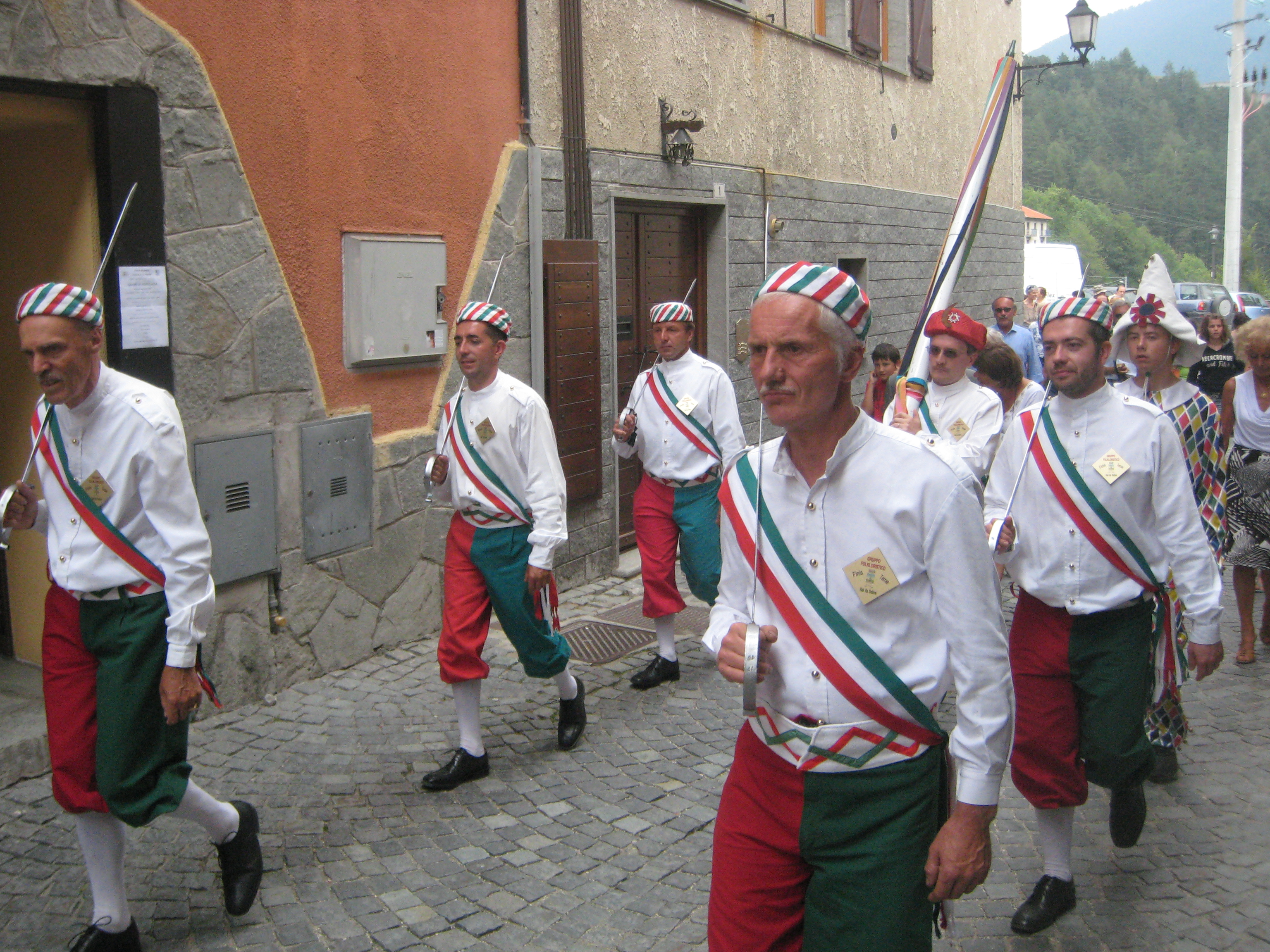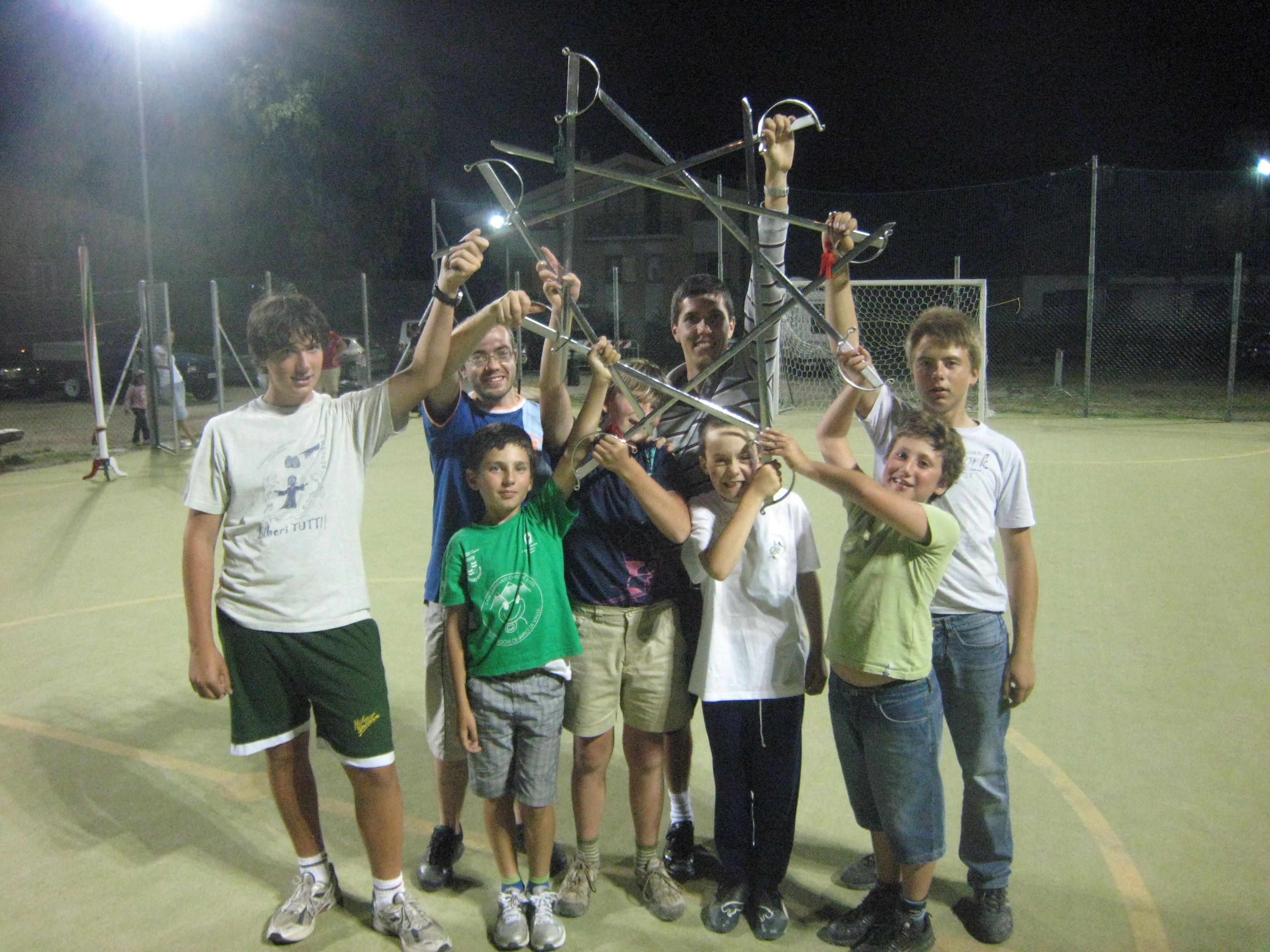Longsword in Italy: History and Stories from Fenestrelle
That monday I woke up and discovered that for a second time this trip my soap had disappeared. I may soon need to factor in soap as a reoccurring expense: Three euros every two weeks. Or learn to keep track of my soap! I am keeping two budgets on this trip. The first is for the watson foundation and keeps track of the amount of money spent in each country by a variety of categories, food, lodging, travel, etc. The second is purely for my planning purposes. It is much more useful and keeps track of simply money spent per day. I have an excel document that then calculates average spent and total spent, and how much I can spend per day for the rest of the trip. I have made it something of a game to come out well underneath these numbers; if I don’t eat for the next week i can spend 13 cents more per day! Just kidding mostly 
I spent that morning walking by the river near the campsite and doodling around on the banjo. I am in the process of writing a new song which I will eventually get around to finishing, recording and posting. Once I had worn out my fingers I went into town to get something to eat. It turns out that Italy is just like France in that everything closes for lunch. Darn! I content myself with gelato and go over to the tourist office. Michelle isn’t there, but the women lets me sit in the back and write in the cool of the building.  After a little while I go back out to find real food, having set my heart and belly on pizza from the delicious restaurant near the office. I walk in and the man who had explained the pizza to me the first night recognizes me immediately, “Ahh, you’re back! But there is no pizza!” No pizza! My belly took this hard. They didn’t start serving pizza for another hour and a half. Instead I walked down to the bottom of the village where I had a sandwich and more gelato. By now the pizza was open and I ate one, covered with artichoke and ham, pepperoni and olives. I told you I was eating!
After a little while I go back out to find real food, having set my heart and belly on pizza from the delicious restaurant near the office. I walk in and the man who had explained the pizza to me the first night recognizes me immediately, “Ahh, you’re back! But there is no pizza!” No pizza! My belly took this hard. They didn’t start serving pizza for another hour and a half. Instead I walked down to the bottom of the village where I had a sandwich and more gelato. By now the pizza was open and I ate one, covered with artichoke and ham, pepperoni and olives. I told you I was eating!
Paolo picked me up at nine and drove me to a small meeting of the leaders of the Fenestrelle Folkloric group. We met at the headquarters, where I got to see the costumes, swords and banners along with some large information panels on the dance. Paulo and Michelle, who I had already met, were present, as were Michelle from the UK and her husband Kent, who were acting as translators. Also present were the team historian and dancer who has been dancing since the revival in 1967. We had wine and pastries as we talked in various jumbles of conversations that Michelle and Kent did an admirable job translating. I pulled out a recorder and went around getting permissions to record and names. The conversation soon descended into lots of side conversations as everyone began arguing and debating the history of the team.
A brief history that people seem to agree on (for the most part)
The origins are mysterious and every possibility they put before me they labeled as a theory. An archeologist recently wrote a book claiming that some cave paintings that were in the area were actually depicting a sword dance of the the nearby town of Giaglione. Other theories place it on Roman soldiers who crossed through this pass. We do know that Julius Cesar stayed in the town, as it is well documented that he wrote about the town in his diary.
The first documented evidence dates to the late 1800s when oral histories being collected on Piedmont traditions. It apparently was only sporadically performed at this point and nearly died out around the turn of the century. In 1913 Estella Canziani and Eleanour Rhode published an account of the dance in a travelogue of their travels through Piedmont. The village apparently performed the dance especially for the women after about 10 years of inactivity. The men performing it had apparently learned it by “[looking] through the keyhole of a certain door where some old men of the village practiced it, until they had also learned it.” She places the traditional date as the 13th or 20th of August (as opposed to the current coincidence with the Feast of St. Luigi, August 25th and older records placing it at Carnival). She discribes 18 dancers as the ideal, and that on must not have less than 14 (as opposed to the current thought that 12 is best, and says that “there was no drum to be had, and so the drummer sat by the wall beating time on a tin can with a club.” In other differences from the current dance, she describes a harlequin and a clown as well as Cuirassiers as opposed to the current Carabinieri figures. 
She describes the dancing in a costume that is almost certainly a description of the current outfit. The next time the dancing was revived was in 1935 for an exposition in England. The team was not performing regularly, but the government funded the trip and selected men to go. The story that I had heard was that the fascist government had decided that the dance should be a showcase of italian strength and pride. The team says that it was at this point that the government required that they dance in the colors of the Italian flag, which they dance in to this day. Before this time they said they had danced in costumes more similar to Bagnasco. This is complicated by Rhode’s description of the dance which very clearly is describing the current costume, some 20+ years before. While there exists a video of this performance in the UK the team has not been able to access it. They have applied to the archive in which it is held, but thus far have not been granted permission to view it. I plan to investigate further when in England. An interesting point is that the video is around 80 minutes long, coinciding with Rhode’s description of the dance taking “one hour and a half to two hours…[where]…the dancers never stop moving for a moment and…the chain is never broken” while the current dance is around 20 minutes and (in very recent years) the inclusion of younger dancers requires that the chain breaks several times in order to get the sword over taller members’ heads.
The dance was next revived in 1967 for a convention between Piedmont Italy and Provance, France. The town wanted something to display at the festival, and the other option was apparently putting together a soccer exhibition. Luckily, they went with the dancing. One of the men present had been on the team in this first dance and told some of the stories. Apparently the performance was in August and they only decided to do the dance at the end of June. This meant that the month of July was a frantic reconstruction and rehearsal for the dance. Not only did they need to remember the dance itself, but the costumes and even swords that had been lost. The whole town rallied to make costumes, forge swords, find drums and get ready to perform. The dancers were all boys between the age of 15 and 19 and continued to be teens and adults until around 10 years ago. Since the revival the dance has continued every year although in the 80s, as the population of the city declined to the present 550, they started allowing dancers from neighboring villages. In recent years they have also allowed younger boys to join the team. They gave me the cookies for the next day, which were delicious.
The next day I sent out a bunch of CouchSurfing requests for Turin, my next stop. The evening was spent at the rehearsal for the dancing of both the men and women’s groups. It was conducted on the sports field late at night, but I got to film and photograph the rehearsal and even dance a bit! When the practice was done, I got to teach them some English Longsword, which was a lot of fun!
 They all agreed that it was “very beautiful,” “great!” and “wizard!” but also very hard! We ended with a sword lock, which was interesting looking with the large guards of the italian swords. They asked me to demonstrate it during their main festival on Thursday, and I happily agreed.
They all agreed that it was “very beautiful,” “great!” and “wizard!” but also very hard! We ended with a sword lock, which was interesting looking with the large guards of the italian swords. They asked me to demonstrate it during their main festival on Thursday, and I happily agreed.
I haven’t had consistent access to the internet in a while (Italy hates free witi!) so there are several videos that I would still like to upload but if you haven’t checked it out yet, you should definitely check out my youtube channel!
I’m in Florence now, off to Venice soon and then a month in Basque Country and Spain!
Woohoo!
Carabinieri
Post a link to your you tube channel, I couldn’t find it.
Hi Jeremy; nice to read your post. I hope everything is fine for you. Make a lot of note of what you see and heard about each dance. After a few month I don’t know if you will “rearange” similarities or opposition and so on. Take the best of your trip and don’t eat to much gelato …. Hope you will find another soap.. GuyRo
GuyRo
Hi GuyRo, Thanks for saying hi! I probably ate a little too much gelato, but now i’m in basque country so no longer! I hope you are well and say hi to your family!